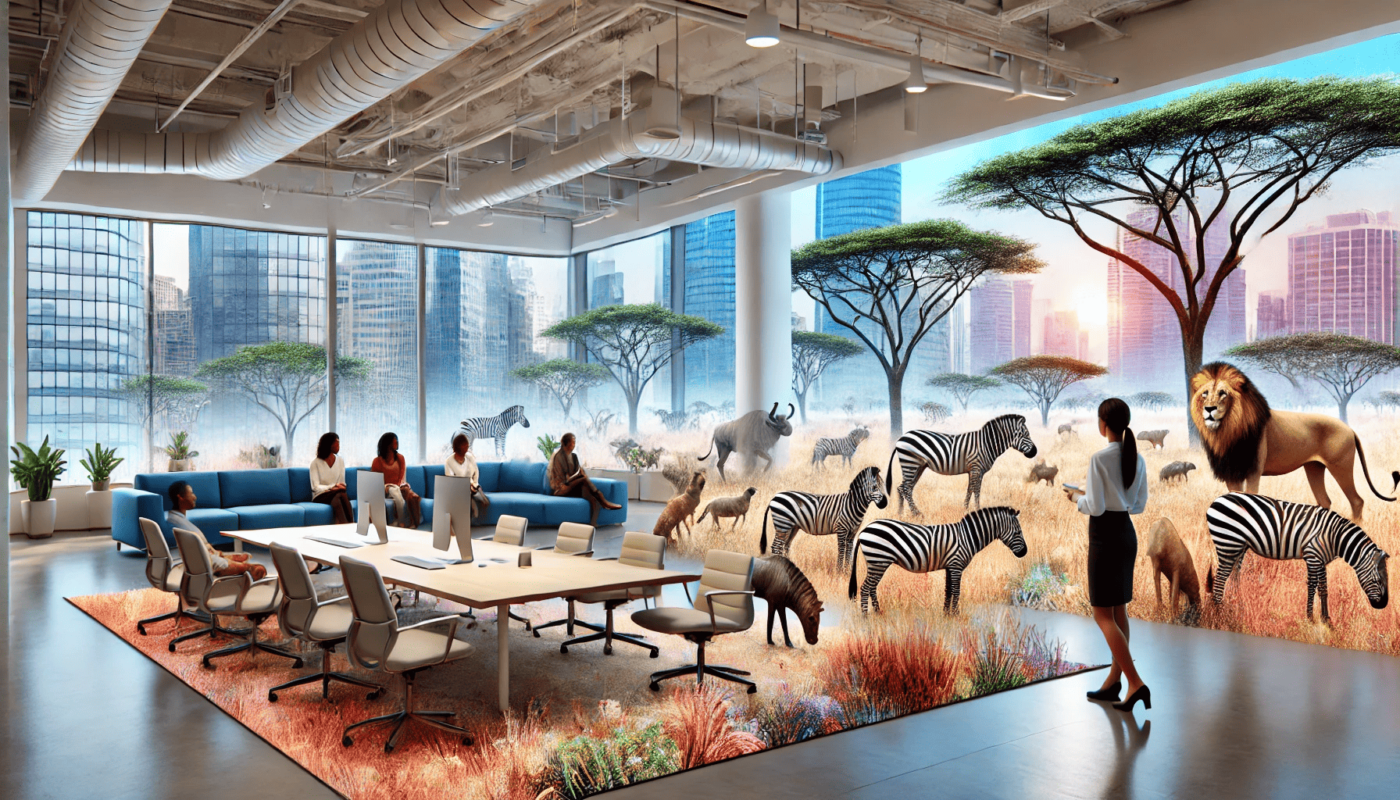Augmented reality technologies, rapidly changing the perception of the surrounding world, create an opportunity for immersion in virtual landscapes, even in the most urbanized places. Mega cities like New York are already actively harnessing the potential of these technologies. One of the most striking examples is a virtual presentation of the natural resources of Tanzania, when residents and visitors of the city can move to African reserves without leaving its borders. This gives you a unique chance to get acquainted with the flora and fauna of distant parts of the world and feel the influence of the aromas of wild nature, which immerse you in emotions and memories.
In the concrete jungle of the metropolis, it would seem that there is no place for wildlife. However, virtual tours of Tanzanian nature reserves erase this distance, offering everyone a truly immersive experience. This innovative approach allows people to get closer to nature by observing majestic savanna inhabitants, such as elephants and giraffes, while minimizing the physical impact on their environment. This helps preserve natural resources and draws attention to the importance of protecting them.
New York’s office spaces are becoming a gateway to the African steppes, where virtual reality technology allows you to forget about everyday worries for a moment and plunge into the world of wildlife. Employees can switch between work and find themselves in the midst of African landscapes, feeling the greatness of nature and being inspired by its beauty. Such projects not only provide a unique experience, but also motivate people to take conscious steps to preserve ecosystems, emphasizing the need for harmony between urbanization and the environment.
Virtual safaris: the latest technologies in the service of nature
Virtual nature reserve tours are becoming increasingly popular in major cities, providing a unique way to explore the wild corners of the world without having to leave the city. Augmented reality technologies help you visualize and animate natural landscapes right on the streets of the metropolis. For New Yorkers, this is a real godsend — an opportunity to see exotic places and get acquainted with the Tanzanian nature. The use of such technologies allows people to feel connected to nature, being thousands of kilometers away from it.
One of the key aspects of such tours is their environmental friendliness. Unlike traditional tourism, virtual excursions do not harm ecosystems. This is especially important for protected nature reserves, where the slightest intervention can lead to serious consequences. Virtual safaris allow you to maintain an interest in wildlife without disturbing its natural balance. The use of these technologies opens up new opportunities for eco-tourism, reducing the burden on nature.
For companies implementing such technologies, this is not only an opportunity to impress their customers, but also a way to draw attention to environmental issues. Thanks to virtual reality, residents of megacities can learn more about the rich flora and fauna of Tanzania. These technologies make nature reserves closer and help foster respect for ecosystems.
Interactive elements of virtual tours
One of the key factors that make Tanzania’s virtual safari experience so exciting is the integration of interactive elements. Technology allows users not only to observe nature, but also to interact with it in real time. This creates a sense of total immersion, where everyone can choose what to pay attention to, as if they are really in a nature reserve. Such innovations make tours fun and informative for people of all ages.
The interactivity of virtual tours is expressed through the many opportunities that modern technologies offer. For example, during a virtual journey, you can zoom in on animals, study their behavior, and even get information about their habitat. These features are implemented through intuitive interfaces that make the process simple and accessible. Here are some examples of interactive features that make virtual tours unique:
- The ability to watch animals in real time from different angles.
- Access to educational information about each sport.
- Special challenges and quests for kids, making tours a family-friendly experience.
These features help users not just look at screens, but actively participate in the process of exploring nature. Virtual safaris allow you not only to have fun, but also to learn through the gameplay. This approach increases interest in nature protection and promotes the spread of environmental awareness among residents of megacities.
Virtual nature reserves for everyone
Virtual reality technologies make nature accessible to everyone. Not everyone can afford a trip to Tanzania, but virtual tours offer an amazing opportunity to touch the wildlife while being in the metropolis. This is especially important for those who have limited mobility or are not ready for long trips. Thanks to these technologies, the study of nature has become accessible and exciting for a wide variety of people.
These virtual nature reserves are particularly valuable for educational purposes. New York City students can now learn more about biology and geography from the comfort of their classrooms. Virtual tours allow you to see the wildlife of Tanzania in real time and learn about important aspects of environmental protection. This format of training attracts the attention of young people and helps them develop environmental awareness.
Interactive lessons are becoming an important tool for arousing interest in nature conservation among a new generation. Virtual safaris stimulate curiosity, inspire research and immerse students in the atmosphere of nature. These technologies open up a new world of opportunities for environmental education, which helps strengthen the connection between people and nature.
Tanzania in the heart of the metropolis
Virtual technologies offer a unique opportunity to combine an urban lifestyle with a love of nature. New York City, known for its pace and energy, is becoming a portal to the wild corners of Tanzania. Now residents of a megalopolis can feel the presence of nature without leaving the city limits. This allows you to create a special atmosphere that helps people escape from their daily routine.
Virtual tours in the heart of the metropolis not only entertain, but also remind you of the importance of preserving ecosystems. Even in an urban space, people can get in touch with wildlife, which helps to form a more conscious attitude to the world around them. The fusion of nature and technology is becoming an essential element of the urban experience, offering residents a new perspective on familiar things.
Such technologies also help build closer connections between megacities and remote corners of the planet. They emphasize the importance of global thinking and caring for nature, regardless of where a person lives. Virtual safaris are becoming a way to expand the boundaries of perception of the world, combining cities and nature reserves in a single digital space.
Questions and answers
Augmented reality technologies allow you to dive into virtual tours of nature reserves through special interfaces.
They promote environmental education and make the learning process fun and informative.
They help create a conscious attitude towards preserving the environment, making nature closer and more accessible.

